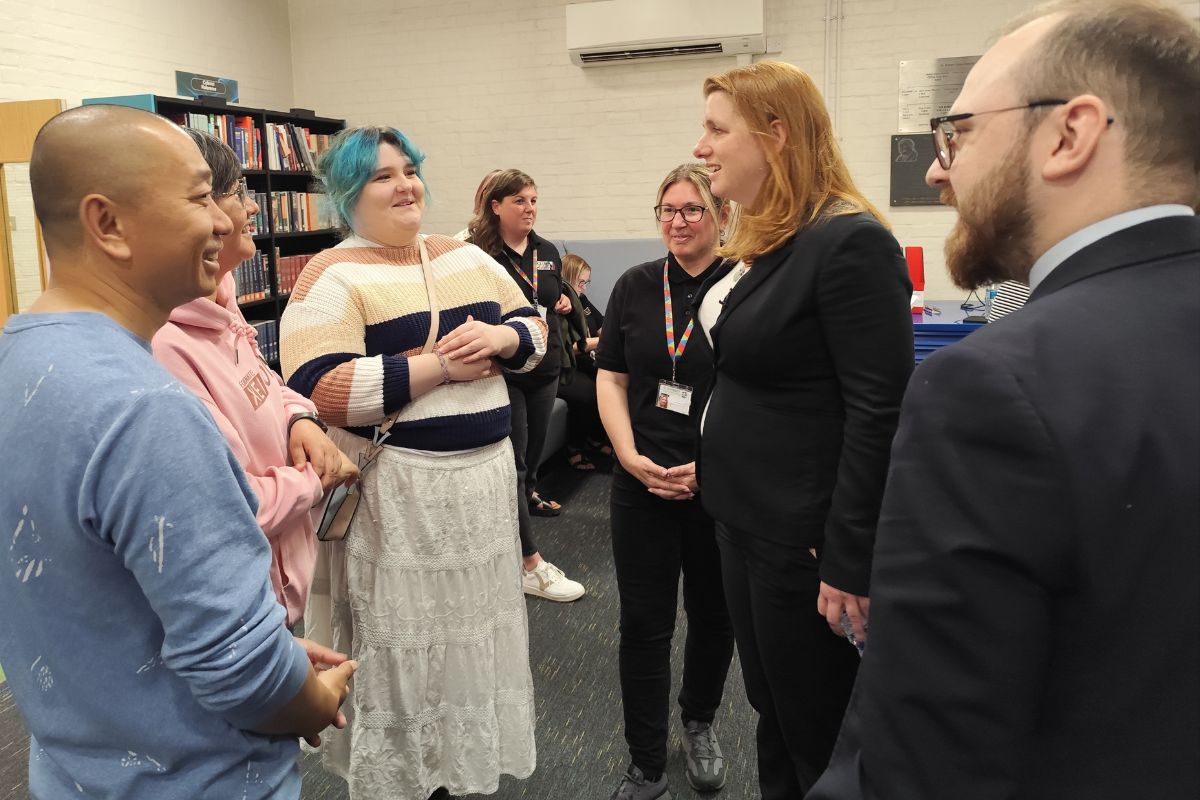Organizations Must Reinvent Their Employee Value Proposition to Deliver a More Human Deal

Providing Employees with a More Holistic Experience Increases Employee Satisfaction by 15%
To attract and retain talent, HR leaders must evolve their employee value proposition (EVP) to provide a more human deal that centers on the whole person, according to Gartner, Inc. Employers must redesign their EVP to deliver employees a life experience – not just an employee experience – by focusing on the feelings and features that match their needs today.
Gartner analysis revealed that while organizations have invested resources to modernize the traditional EVP, employee engagement has remained flat since 2016. The Gartner 2021 EVP Benchmarking Survey of 77 HR leaders in January 2021 revealed only 23% of respondents believe most employees will continue working in their current organization after the pandemic ends. One contributing factor: only 31% of HR leaders believe their current employees are satisfied with their EVP.
“Traditionally, organizations focus on employees as workers when they define their EVP,” said Carolina Valencia, vice president in the Gartner HR practice.
“Instead, employers need to see their employees as people first and foremost. Our research shows that 82% of employees say it’s important for their organization to see them as a person, not just an employee, yet only 45% of employees believe their organization actually sees them this way.”
Organizations can strengthen their EVP by delivering on the new human deal that encompasses five attributes: deeper connections, radical flexibility, personal growth, holistic well-being and shared purpose. Employee satisfaction with the EVP increases by 15% when it encompasses the human deal. To make progress on delivering employees a more human deal, which leads to increased intent to stay, employee wellness and likelihood of recommending the organization to others, HR should do the following:
Personalize connections while respecting boundaries
To ensure employers are respecting employees’ boundaries while personalizing connections, HR leaders should integrate inclusion goals into day-to-day work and talent processes to drive accountability and ensure employees feel comfortable bringing their full selves to work; provide benefits directly to employees’ families or communities; and identify information employees are comfortable sharing to improve trust.
Ensure productivity while providing choice
Most organizations typically offer flexibility in when and where work gets done, but leading organizations also offer flexibility in who employees work with, what they work on, and how much they work.
For the best results, HR should partner with managers to establish team flexibility boundaries. Managers can then offer employees flexibility choices within these boundaries and encourage teams to co-create flexibility norms for their specific context. Organizations can also ensure flexibility for all by determining which activities, not which roles, can be flexible.
“Radical flexibility fuels performance,” said Dion Love, vice president, advisory, in the Gartner HR practice.
“Employers can increase the percentage of high performers by 18 percentage points by offering employees greater choices surrounding their work conditions.”
Advance organizational and individual growth
More than half of employees feel it’s important for their employer to provide opportunities for personal growth. Progressive organizations are providing employees with objective career coaches who help them prioritize their personal goals and explore how to pursue them internally and externally.
Leading HR functions are bringing employees into the design of development opportunities to help scale the number of development options and improve their relevance to employees’ personal interests.
Create diverse, yet focused well-being offerings
Gartner’s research reveals nearly half of employees say their work-related stress is higher now than previously in their career. Employers are offering physical (80%), financial (67%), and emotional (87%) well-being benefits, however few employees are using those offerings.
Managing this gap between the benefits programs offered and the programs requires HR to take three actions:
- Hold employees accountable for their wellness by helping them identify the well-being offerings that matter most to them, incentivizing them to use available offerings and enabling them to track their wellness progress.
- Leverage leaders and peers to reduce the stigma of well-being offerings by having open and honest conversations about mental well-being to normalize mental health topics and support.
- Coach managers on how to provide effective well-being support.
Take action while representing all perspectives
Fifty-three percent of employees want their organization to take action on issues they care about. Many organizations struggle on how to balance activism with representing all perspectives. HR leaders should include employee perspectives – across levels, business units, and functions – when determining which societal issues to act on.
HR should also partner with experts throughout the organization to create a societal issues decision framework that prioritizes how those issues align with the organization’s goals. HR can then collaborate with the communications team to share the framework across the organization to increase transparency and help employees feel invested.
Gartner clients can read more in the report “Reinventing the Employee Value Proposition: The Human Deal.”

86% of Organizations Are Conducting Virtual Interviews to Hire Candidates During Coronavirus Pandemic
#GartnerHR – Recruiting Leaders Are Employing New Hiring Strategies During the COVID-19 Pandemic
A Gartner, Inc. poll of 334 HR leaders on April 13 found that 86% of organizations are incorporating new virtual technology to interview candidates due to the COVID-19 pandemic. In response to the uncertainty created by the pandemic, 82% of organizations anticipate a decline in external hiring across the next three months.
“Recruiting leaders are caught between the sourcing and hiring plans that were initiated before the COVID-19 outbreak and the rise in uncertainty and social and economic instability,” said Lauren Smith, vice president in the Gartner HR practice.
“As external hiring slows for many organizations, and business priorities change, leaders must evaluate different methods of recruiting and hiring.”
To acquire talent amid the changing economic climate, HR leaders should consider the following measures:
Create Effective Virtual Hiring Processes
The current coronavirus crisis has pushed businesses to implement more large-scale virtual recruiting and interviewing efforts. HR should partner with recruiting leaders to ensure they can successfully utilize recruiting technology to create a positive candidate experience. The Gartner poll found that 85% of organizations are utilizing new technology to onboard employees.
“While most organizations are currently conducting interviews remotely due to the COVID-19 pandemic, virtual interviewing may become the new standard for recruiting leaders and candidates long after social distancing guidelines are lifted,” added Ms. Smith.
“The most successful organizations provide candidates with the same level of information and feeling of connection with the organization as they would have with an in-person interview or onboarding experience.”
Realign Hiring Plans
As economic uncertainty and budget constraints impact many organizations, senior leaders are reassessing their hiring plans. Fifty-four percent of organizations have delayed candidates’ start dates and 31% have canceled internship programs, according to Gartner research. In addition, 63% of recruiting leaders report that more than half of their job openings are currently frozen.
During these changes, recruiters and hiring managers need to effectively manage candidate emotions in order to avoid both reputational damage and difficult recruiting efforts in the future. To enhance the candidate experience, leaders should provide clear and transparent communications to candidates if the position they applied for is placed on hold. For candidates that have accepted a job offer, leaders must be as transparent as possible when communicating a delay in their start date and providing timely updates.
Encourage Internal Talent Mobility
Fifty-four percent of respondents to the Gartner poll reported that all hiring efforts, except for critical positions, will freeze in the coming months. As business needs change for many organizations, HR and senior leaders can acquire the people they need by sourcing talent internally. Gartner research shows that though they are not actively searching, 39% of employees would be open to switching to a new role within their organization. Recruiting leaders can promote internal vacancies through online job fairs and should work with employees to locate openings.
“As organizations continue to embrace remote work policies during these circumstances, recruiting leaders should fill talent gaps through alternate employment models that present a lower risk to the organization’s growth,” added Ms. Smith.
Additional information is available in the Gartner roadmap, “Building a Recruiting Technology Roadmap.” The roadmap can be used by HR leaders to make informed decisions on integrating technology into their recruitment efforts.
Learn more about how to lead organizations through the disruption of coronavirus in the Gartner coronavirus resource center, a collection of complimentary Gartner research and webinars to help organizations respond, manage and prepare for the rapid spread and global impact of COVID-19.










Responses